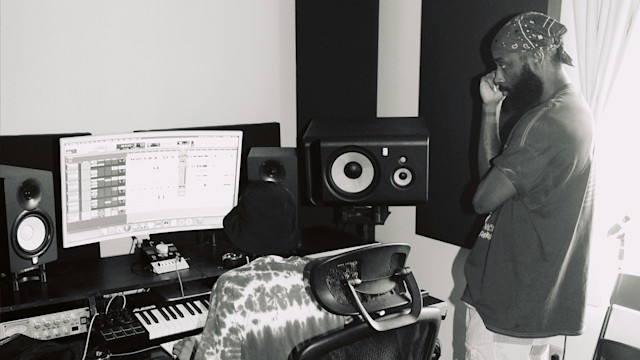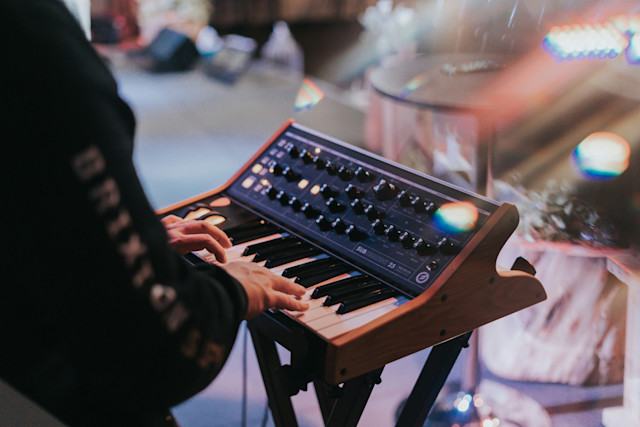Discovering West Coast Hip Hop: A Complete Guide for Producers
September 6, 2024 - Discover the secrets behind the West Coast hip hop sound. This article will guide you step by step to create your own beats with that Californian touch.

West Coast hip-hop has been an undeniable force in rap culture since the 1980s. Not only did it define an era of music, but it established a distinctive sound that still influences today's beats. But how do you capture the essence of West Coast in a modern production? Let's walk through the history of this style, and then I'll offer some guidelines and tips so you can create your own beats with that authentic West Coast feel.
A Little History: How the West Coast Sound Was Born
West Coast hip-hop is known for its laid-back groove, deeply influenced by genres like funk and jazz. While on the East Coast the beats were harder and sample-heavy, the West Coast went for something smoother, more fluid. Dr. Dre was one of the pioneers in mixing elements of funk and electronica to create what would later be called G-funk. What is G-funk? It's those high-pitched, floating synthesizers, thick bass lines with powerful sub-bass, and the use of samples from artists like George Clinton and Parliament-Funkadelic.
If you listen to Dr. Dre's The Chronic (1992), you'll notice how these elements take center stage. The Moog synthesizers were key in defining that unique atmosphere. And it's not just Dre; other producers like DJ Quik and Warren G also helped develop that signature sound that spread throughout the '90s.
The history of the West Coast is marked by the narrative of everyday life on the streets of Los Angeles. Artists reflected life in the city, from the violence to the glamour of nightlife. N.W.A. brought the rawness of gangsta rap to the scene, while Tupac Shakur elevated the lyric with his focus on poetry and politics. All of these elements made the West Coast more than just a subgenre; they made it an identity.
How to Create a West Coast Beat
Now, if you are looking to capture and embody the West Coast sound in your beats, it is necessary to understand some key elements that have defined this style.
1. Deep Bass and Groove
The bass is essential in any West Coast beat. Don't just follow the beat; the bass should tell its own story, it should follow its own line and feel like an element and not an add-on. The trick is to make it deep, with a slow and well marked cadence, but one that also knows how to glide between the notes, adding that smooth and relaxed touch.
For that, try using a synth bass. Synth plugins like Moog or Arturia's Minimoog VST are excellent for getting that thick, enveloping texture. You can also use the sine wave of the SubBass plugin for that deep bass. Adjust the decay so that each note falls off smoothly, giving it that “slippery” touch that characterizes the West Coast.

2. Battery: Simple but Powerful
When it comes to batteries, the West Coast doesn't need to be overly complicated. It's more about the space you leave than what you fill. Think of a kick that resonates loudly, followed by a crisp, clear snare. Don't forget that semi-open hi-hat that marks the beats in between.
When programming, don't hesitate to use classic drum machines like the Roland TR-808 or 909, which are fundamental to this sound. You can make them sound even more vintage by applying a slight overdrive or bitcrusher. The key here is how it mixes with the beat; you need every element of the drums to contribute to the overall groove, not just fill in the gaps.
Soundtrap's beat maker will help you build the perfect West Coast Hip Hop drums.
3. Synths and Samples
The West Coast is full of simple but effective melodies, usually executed on synthesizers. Think classic high-pitched, cosmic riffs that seem to float over the bass. For this, he uses analog synth presets or virtual replicas like the Arturia Prophet V or the Sylenth1.
In addition, samples play an important role. While East Coast beats tend to rely on faster and more complex cuts, on the West Coast the samples are longer and more spaced out. Choose melodic phrases from funk, jazz or soul, and then mix them with long delays to give them that spaced-out effect, as if they were scattered in the air.
A popular technique is to take a wah-wah guitar loop, tweak it with a low-pass filter, and then accompany it with a soft pad that fills in the background. This creates an enveloping atmosphere and gives that characteristic “sunset vibes” feel.
Practical Tips to perfect your West Coast Sound
Now that you have the basics to create your West Coast beats, here are some practical tips that will help you give that authentic touch to your productions:
1. Less is More
In West Coast beats, minimalism is key. Don't saturate your mix with too many elements. Leave room for each sound to breathe. The main groove should be clear, and all other elements should complement it without stealing the limelight. Try to make critical decisions when you want to add each element, think about if it is really necessary or if it will add something positive to your track.
2. Spatial Effects
The use of modulation effects such as chorus and phaser on synthesizers or guitars can help give that floating feeling that characterizes classic West Coast productions. Don't forget the reverb. A good long, but subtle reverb can give your sounds atmospheric depth. Play with decay and pre-delay to find just the right point where the sound stays present, but doesn't dominate.
3. Automation in Synths
Automation is your best friend when you want to add interest without overcomplicating the beat. Automate the cutoff frequency of your synths or add some pitch modulation to give a psychedelic touch to your tunes. Remember: West Coast has a strong connection to psychedelic funk, so don't be afraid to go beyond the conventional.
4. Vocoders and Talkbox
If you really want to take your productions to the next level, experiment with a talkbox or vocoder. These effects add that funky, robotic aesthetic that we hear in songs by artists like Roger Troutman and Zapp, which have been sampled countless times in West Coast beats.
5. Classic References
It never hurts to go back to basics and study some of the classic beats that defined this sound. Songs like Dr. Dre's “Nuthin' But a G Thang,” Warren G's “Regulate,” and Snoop Dogg's “Gin and Juice” are fundamental to understanding the structure and aesthetic of this subgenre. Listen to how the producers used space, melodies, and effects to create unique environments.
When you understand how the West Coast style works, it will be easier for you to implement its characteristic sound in your beats, and also to evolve and experiment with new emotions.
Here is a playlist of the best West Coast references.
Read more: How To Make Pro Beats: Step-by-Step Guide
The Importance of Aesthetics and Visual Culture
We can't talk about the West Coast without mentioning the importance of the visual culture and aesthetics surrounding it. G-funk and gangsta rap not only sounded like Los Angeles, but also looked like Los Angeles. Music videos, with their sunny landscapes, lowrider cars and outdoor parties, helped cement the visual image of this sound.
When creating your beats, it's important to also think about the visual environment you want to evoke. West Coast music is all about atmosphere: it evokes images of clear skies, palm trees and cars bouncing to the beat of the bass. This mindset can help you choose sounds and textures that fit that image.
If you are working with artists who are strongly linked to visual culture, such as rappers who highlight the West Coast lifestyle in their lyrics, try to make your productions reflect that same feeling, either through samples or spatial effects that give a sense of spaciousness and freedom.
The Rap War: West Coast vs. East Coast
West Coast dominance did not come without conflict. As artists like Dr. Dre, Snoop Dogg and Tupac Shakur began to dominate the charts, a cultural and sonic war began between the East and West. This rivalry, fueled by both the media and the industry's artists themselves, was one of the most infamous in hip-hop history. Songs like Tupac's “Hit 'Em Up,” in which he raps against The Notorious B.I.G., are representative of this confrontation.
On a musical level, the rivalry was also reflected in sound. While the West Coast leaned towards calmer rhythms and effortlessly flowing bass lines, the East Coast stuck to their harder sound, always using cutting samples and aggressive drum breaks. This great dispute helped define the identity of each coast and gave strength to the cultural impact of rap in both regions
Modern Evolution of the West Coast Sound
While the classic West Coast sound remains a major influence, the style has evolved significantly since the days of Dr. Dre and Tupac. Today, producers such as DJ Mustard, Hit-Boy and YG have redefined the West Coast sound, incorporating more contemporary elements, such as simpler, catchier bass lines and more minimalist melodies.
One of the key changes has been the transition to a more club-oriented and radio-friendly sound, which can be seen in the use of 808 sub bass and a more direct approach to trap and hyphy. But while there has been an evolution towards these more commercial styles, the use of smooth synths, deep bass and a laid-back melodic approach is still central to today's productions.
If you want to add a modern touch to your West Coast beats, try incorporating trap elements, such as fast hi-hats, sharp snares and rumbling 808s, but keep them in line with the laid-back groove of the classic style. It's a balance of new and traditional that has kept the essence of West Coast alive.
Conclusion
West Coast hip-hop is much more than a collection of sounds and beats; it's an attitude, a way of storytelling, and a cultural legacy that has shaped an entire generation of producers and artists. When you dive into creating your own West Coast beats, remember that groove and space are your best allies. Keep things simple, but effective. Use spatial effects to give depth to your sounds, and don't be afraid to experiment with synths and samples that bring that classic yet futuristic color.
Follow these principles, and you'll be on your way to creating beats that not only sound West Coast, but capture its true essence.
About the author
Odiseo is a music producer and mixing and mastering engineer with experience ranging from music creation as a session and concert musician, beatmaker, live sound engineer, and recording engineer, to audio production for short films, providing a broad perspective on technical concepts and musical skills to take music to another level.
Get started with Soundtrap today!